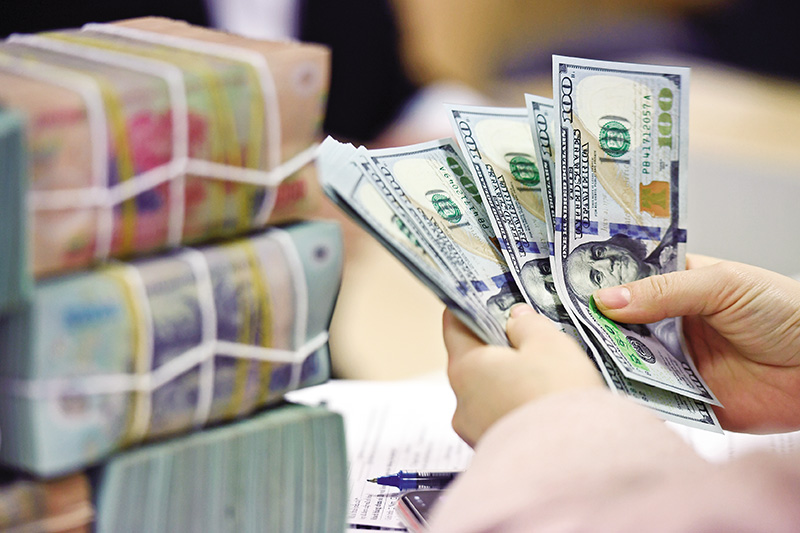UOB Bank (Singapore) has just released a forecast for Vietnam's economic growth in the second quarter of 2025 conducted by the Global Economics and Market Research Department. UOB commented that Vietnam's economic activities have recovered thanks to the 90-day US tax suspension, with export and import turnover in April increasing more strongly than expected compared to the same period last year, reaching 20% and 23% respectively.
Tariff risks continue to weigh on economic outlook
Looking ahead, the next major milestone will be July 9, when the 90-day moratorium is scheduled to end. According to reports, Vietnam is currently in trade negotiations with the United States, with the second round of talks taking place from May 19-22. The next round is expected to take place “in late June.”
Economic activity has picked up thanks to the 90-day tax holiday, with exports and imports rising more than expected in April compared to the same period last year, up 20% and 23%, respectively. The gains were largely due to businesses increasing their transactions ahead of the end of the tax holiday.
However, amid uncertainty surrounding tariff policy, UOB remains cautious on Vietnam’s outlook, given the economy’s heavy reliance on trade (exports account for about 90% of GDP).
 |
| UOB: State Bank keeps policy interest rates unchanged for now |
In addition, exports are also highly concentrated in key industries such as electrical and electronics, furniture, textiles and footwear. UOB maintains its forecast for Vietnam’s full-year economic growth at 6.0% in 2025 and 6.3% in 2026. In the second and third quarters of 2025, GDP growth is expected to reach 6.1% and 5.8%, respectively.
In a report on 2 April, UOB lowered its growth forecasts for 2025 and 2026 globally, reflecting the strong negative impact on international trade and investment flows. For Vietnam, UOB revised down its growth forecast to 6.0% (from 7.0% before 2 April), compared to 7.09% achieved in 2024. Previously, the National Assembly had set a growth target of “at least 8%” for 2025, while expecting “double-digit” growth in the 2026-2030 period.
State Bank keeps policy interest rates unchanged at present
According to UOB economists, inflation in Vietnam has cooled somewhat, at around 3.1% year-on-year in both March and April 2025, down from an average of 3.6% in 2024 and 3.26% in 2023, while still below the target of 4.5%.
A benign inflation backdrop amid global trade tensions and rising tariff uncertainty has opened up the possibility of the State Bank of Vietnam (SBV) easing monetary policy. However, unlike some of its regional neighbours, the current weakness in the Vietnamese dong (VND) is a factor that the SBV is weighing on. In the current context, UOB forecasts the SBV will keep its policy rate unchanged, with the refinancing rate remaining at 4.50%.
"If domestic business conditions and the labor market weaken significantly, we expect the SBV to cut the refinancing rate once to a COVID-19 low of 4.00%, followed by a further 50 basis points reduction to 3.50%, provided that the foreign exchange market remains stable and the US Federal Reserve (Fed) implements a rate cut. At the moment, our base case remains that the SBV will keep policy rates unchanged," the UOB report said.
Meanwhile, the VND has weakened more than its regional peers. UOB believes that the Vietnamese Dong (VND) has been one of the region’s worst-performing currencies since the US President declared “Liberation Day”, amid a general recovery in Asian currencies in the second quarter of 2025. Since the beginning of the quarter, the VND has depreciated by 1.8%, hitting a new record low of around VND26,000/USD.
UOB believes that VND will continue to fluctuate in a weak range within the trading range with USD until the end of Q3/2025. However, from Q4/2025 onwards, VND may begin to regain momentum, in line with the general improvement trend of Asian currencies as trade uncertainties gradually ease. UOB updates its USD/VND exchange rate forecast as follows: 26,300 in Q3/2025, 26,100 in Q4/2025, 25,900 in Q1/2026, 25,700 in Q2/2026.
Source: https://baodautu.vn/uob-ngan-hang-nha-nuoc-giu-nguyen-lai-suat-chinh-sach-trong-thoi-diem-hien-tai-d300790.html



















































![[Maritime News] Wan Hai Lines invests $150 million to buy 48,000 containers](https://vphoto.vietnam.vn/thumb/402x226/vietnam/resource/IMAGE/2025/6/20/c945a62aff624b4bb5c25e67e9bcc1cb)




















































Comment (0)